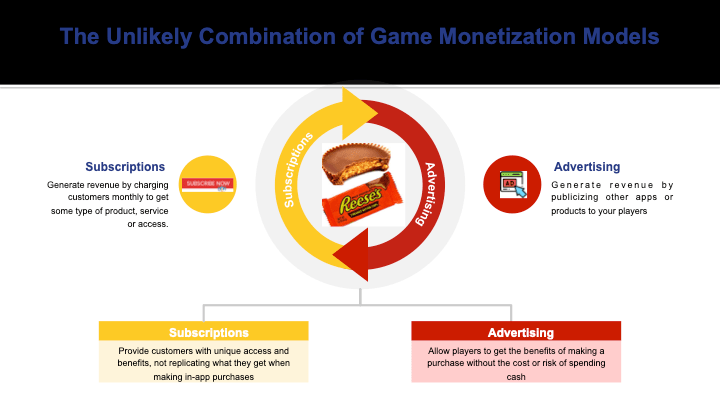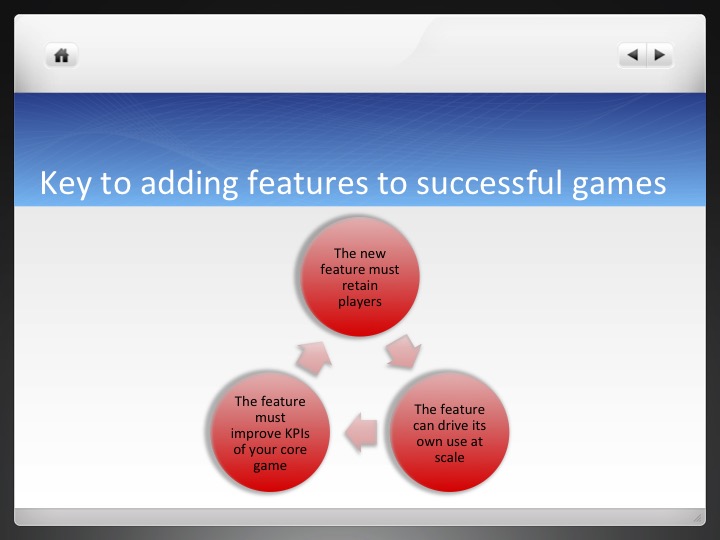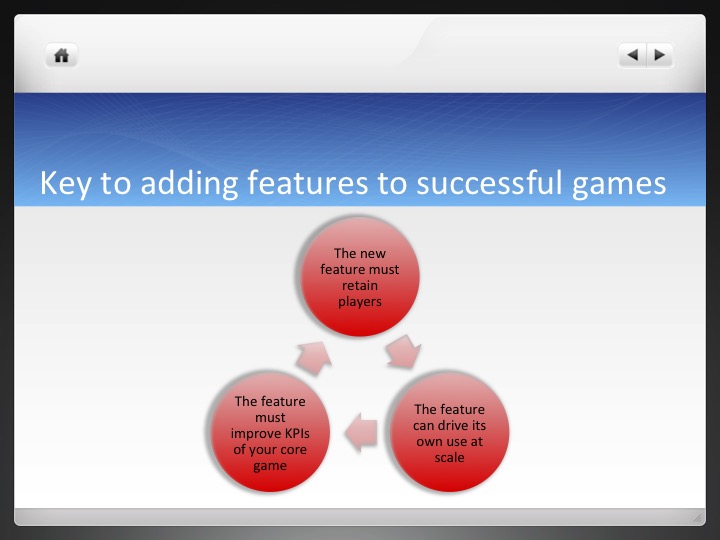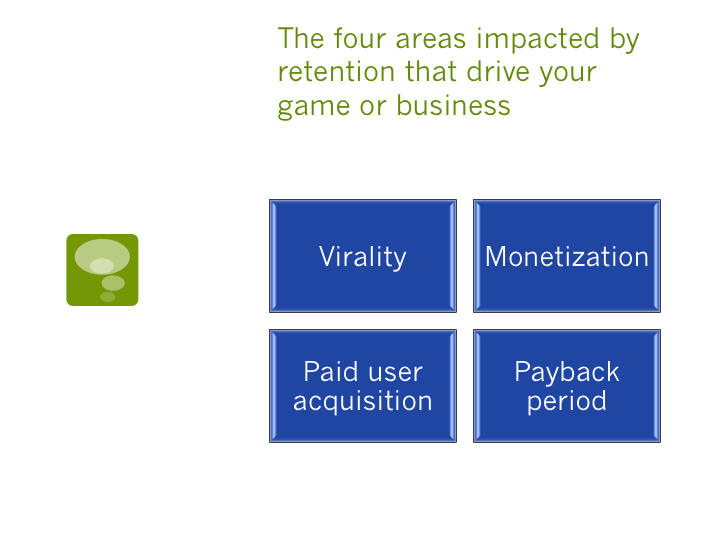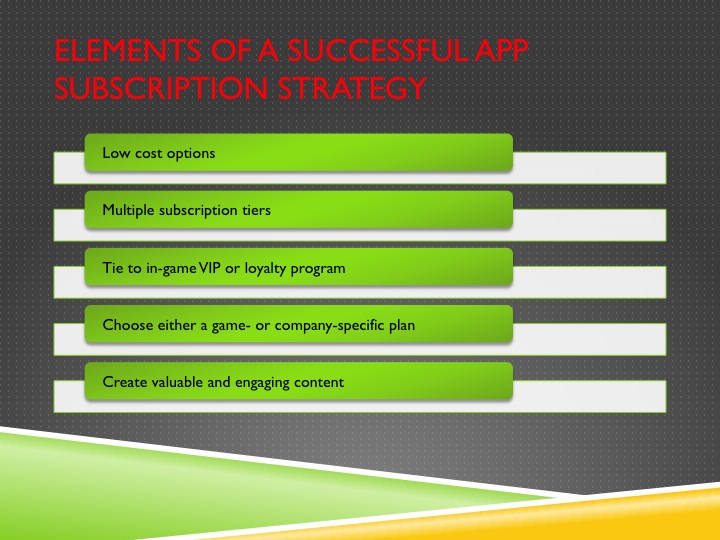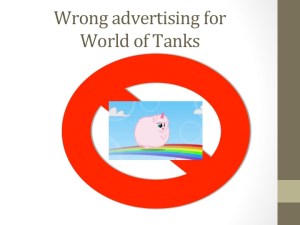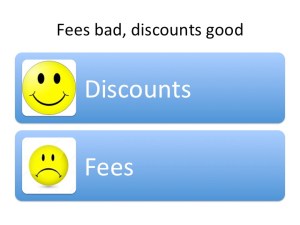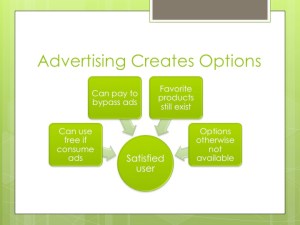People in the game industry are continually asking about “a new business model” but they usually want new monetization techniques (ie. gatcha mechanic, piggy bank, etc.). Now, however, there is a real opportunity to disrupt the industry with a new model, subscriptions. I have been in the games industry since 1993 and in that time there have only been two new models, try-before-you-buy and free-to-play. Subscriptions may usher in the next era of gaming.
Try-before-you-buy was introduced in the early 2000s and perfected by Big Fish Games, who released via download a game every day that was free for the first hour and then the player would have the option of purchasing the full game. While the model did not have a huge impact on the traditional game companies (who were selling their product for a fixed cost in retail), it was blue ocean as it brought an entirely new demographic into gaming. For the first time, gaming was not dominated by teen age boys playing in their parents’ basements (or 30 year old boys playing in their parents’ basements) but saw an influx of female players, particularly older women.
Early in the 2010s the gaming industry experienced its greatest disruption. Free-to-play gaming gained traction in the US (and Europe) after dominating Asian markets. In this model, games were truly free and over 90 percent of the players would never spend a penny. The games, however, were built to get the most engaged players to spend to improve or speed up their gaming experience, and many of these players would spend tens or even hundreds of thousands of dollars in their favorite games. Social gaming companies, led by Zynga, gained millions of daily players, pulling them from other gaming or entertainment companies.
Free-to-play was truly disruptive. Household names like Atari, Acclaim and THQ (which had earlier reached over $1 billion in sales) went bankrupt. Zynga saw its valuation reach over $10 billion. Disney and Electronic Arts both spent hundreds of thousands of dollars to acquire companies in the space. The concepts behind free-to-play have grown to shape the video game space, even those old-school companies that still monetize with an upfront purchase use in-game monetization to drive their revenue growth.
Given the impact of free-to-play and the millionaires it, everyone has been looking for the next disruptive business model. Based on how other industries are evolving, subscriptions are likely to be the next disruptive model in the game industry,
How subscriptions are changing the world
While Asia provided a clue that free-to-play would disrupt Western video game markets, developments in other industries show the likelihood that subscriptions will emerge as a disruptive force. The largest retailer in the world (by market cap), Amazon, uses its Prime subscription service to lock in customers. Salesforce.com, the most important company in the enterprise software space, eschewed the high fixed fee model for a subscription model that left its established competitors in the dust. Adobe, the largest provider of graphics software, abandoned its old business model to move to a subscription model and is now valued at $135 billion. Netflix, the second most important entertainment company in the world (nobody is beating Disney for a while), gained its position with a subscription model. Even Disney is betting its future on subscriptions with Disney Plus.
Enabling this shift is a change in people’s attitude. Ten years ago, people would not pay for digital content and overall wanted to own things. People did not pay for music (remember Napster). People would buy a DVD or CD, even if they would only experience it once. The examples above (and the hundreds I left out) show that attitudes have shifted. Millions of people are willing to pay Spotify money every month without owning a song. According to the Reuters Institute, in the United States, the proportion of people ages eighteen to twenty-four paying for online news leaped from 4 percent in 2016 to 18 percent in 2017. Attitudes have clearly shifted.
Why subscriptions work
Subscriptions have succeeded because they better align customers with providers than other business models. Rather than the linear model of selling a product to a customer, the subscription model creates a dynamic where the company to please constantly its customers. As Tien Tzuo says in Subscribed, “companies that know what their customers want, and how they want it, will succeed over companies that spend a lot of time and effort creating a product they think is a good idea, then spend equal amounts of time and effort trying to persuade people to buy it.”
Further driving the success of the subscription model are the benefits it has for the provider. Subscriptions allow companies to start the month (or year) with a guaranteed base of business. Rather than having to estimate how many units you will sell, you look at your subscriber base and can accurately forecast your revenue. This stability allows companies to market aggressively, invest in new content, etc., as they can predict cash flow.
The subscription model also aligns companies with their customers. As Tzuo writes, “instead of thinking about reseller margins and unit sales, [companies are] thinking about subscriber bases and engagement rates.” Companies driven by a subscription model have direct ongoing relationships with their customers. They no longer have to segment customers, they now have individual subscribers. With the industry leaders (Amazon, Netflix, etc), every subscriber has their own home page, their own activity history, their own red flags, their own algorithmically derived suggestions, their own unique experiences. And thanks to subscriber IDs, all the boring transactional point-of-sale processes disappeared. As companies can never be too close to their customers, subscriptions create the loop that makes customer intimacy a reality.
Will subscriptions work in the game industry
Now that we agree that subscriptions are a great opportunity overall, will they work in the game industry. First, many game companies already are using this model. According to a great blog post by Google, they have seen global growth in game subscriptions of 70 percent year over year. Second, it is working. According to the post, game companies that have integrated subscriptions experience 20 percent higher retention. They also have seen higher overall monetization. Finally, subscriptions offset risk in developing and launching new content. According to Tzuo, “regardless of whether a show is successful or not, investing in sharp new content helps Netflix to both (a) attract new subscribers and (b) extend the lifetime of its current subscribers. Those shows don’t go away! Together, they’re increasing the overall value of the portfolio. They are instrumental in driving down customer acquisition costs (as more subscribers sign up) and increasing subscriber lifetime value (as more subscribers stick around for longer).”
How you should implement subscriptions in games
While subscriptions are an exciting opportunity, success with the model will come down to execution. Just as hundreds (or thousands) of game companies failed to implement successfully free-to-play, succeeding with subscriptions is more difficult than adding another package to your purchase page. There are several core concepts in building a product that leverages subscriptions.

Subscriptions need to be about access
The biggest challenge, and most common mistake, game companies face is what to provide for the subscription fee. The easy answer is virtual currency, after all it is what customers are willing to pay for with in-app purchases. The easy answer is wrong. As stated in the Google post, “it’s important to move away from the mindset that subscriptions are just an auto-renewal mechanism for discounted IAP. Instead, subscriptions need to be thought of as offering highly-retentive long-term access to content, rather than the one-time situational purchase of content offered by IAP.”
Successful subscriptions are about giving players access to content and special benefits, access that can be gained or lost. In a social casino, it could be access to new slots or unique table games. In a game like Archero, it could be access to special levels or powers. The benefits could also be exclusive tournaments, special avatars or unique in-game events. The key, though, is not limiting (or even relying) on giving players virtual or premium currency but access to a premium experience.
Keep it simple
One of the core principles in creating successful products is to focus on simplicity, which is often very complex to do, and subscriptions are one area where it is easy to fall into the complexity trap. Companies with very successful subscription offerings have very few options.
If you offer customers too many options, it is likely to overwhelm them and preclude them from choosing any of the options. This concept of cognitive load is critical to the success of many products, from games like slots to apps like Uber. Given that the human brain consumers 20 percent of the body’s energy but only is 2 percent of the body’s mass, it is important to understand that people will subconsciously work to reduce the amount of energy the brain is using.
Cognitive load is how much info people are processing at any one time. Cognitive load is tied to working memory, the more information in that short-term memory the higher the cognitive load. As cognitive load increases, consumers are less likely to make a purchasing decision.
With subscriptions, this is directly tied to the offerings. If a player has different options ranging from the term of the subscription, monthly costs, benefits levels, they are likely to choose none. For example, you might offer people a month-to-month, 3-month-, 6-month or 1-year plan, with pricing at $4.99, $9.99, $19.99 and $49.99, each with different benefits. Rather than the player finding the one that optimizes their utility (to use an economist term, or makes them happiest, to use a human term), they are more likely to shut off and just pass on the offerings.
Instead, offer them one or two (at most) options. It can be a regular subscription or a premium one (additional benefits) or a short-term plan and an annual plan. You do not see Netflix offering ten different types of subscriptions. The key is make it very easy for the player to understand the value and choose between the two plans and whether or not to subscribe.
Keep it honest
One of the reasons subscriptions took so long to be commonly accepted is that until recently they were part of a sleazy industry. Companies would trick customers into signing up for a subscription, then make it very difficult to cancel the subscription. They might let you sign up easily, then require you to call them to cancel at a call center open one hour a week every second week. Even then, the agent you spoke to would do everything humanly possible to keep you from cancelling, creating an awful experience. These practices soured people overall on signing up for subscriptions. With social media and sites like TrustPilot, word quickly gets out of deceptive subscription tactics.
Preventing customers from leaving or tricking them into subscribing is not only unethical, it is bad business. One of the fundamental values that subscriptions create for a business is the connection with the customer. It forces the company to ensure every month it is creating value for the customer and that is why the customer renews or maintains the subscription. Everyone on the product team looks at new content and features and judges whether it will help retain customers and bring in new subscribers. While scamming customers may bring short term gain, it is the customer connection that subscriptions create that leads to great companies like Amazon, Netflix, Spotify, etc.
The best companies use subscriptions to improve their underlying business. Tien Tzuo writes in Subscribed that “the smart [companies] realize that if they really want to retain their subscribers, they need to focus on building a great service, without relying on lame tricks like hiding the cancel button.…Make it easy for customers to leave if they want to. You can certainly ask them why they’re leaving, or try to win them back, but don’t get in their way—the digital equivalent of blocking the exit with a hulking security guard. When you build subscriptions into your game, let customer value drive the offering rather than tricks on keeping customers from cancelling.
Build a loop
A successful subscription plan should be tied to engagement in the underlying game. The more a customer plays the game, the higher the value of the subscription. According to the Google post, “in mobile games’ subscriptions design, some offer a booster or bonus points, to reinforce the action of ‘play.’ Some create a durable good, such as a permanent building or character, that levels up as a player remains a subscriber for a longer period of time. In these cases, the desired action is “continue to subscribe.” In other cases, subscribers get bonus premium items, currency or points to reinforce the action of in-app purchases.
Looking outside the game industry, airlines have done a good job of creating a loop around their frequent flier programs. With frequent flier programs, members improve their status by flying more or buying expensive tickets, such as business class. According to the Google post, “the ‘earn’ criteria here — flying or spending — is precisely the desired customer actions that the airlines want to reinforce.”
Evolve benefits
Another important element of a successful subscription program is that benefits evolve. According to Google, “as the players invest more in the game, whether it’s with their time, skills, or other IAP, the subscription benefit also compounds.” Thus, the player can unlock more sophisticated content or new challenges that would not have been relevant for them earlier in their experience.
Celebrate VIPs
VIPs are the core of virtually any social game’s success. Most free-to-play games generate 60-90 percent of their revenue from the top 1 or 2 percent of players. Many product managers have avoided subscription programs because of concern on how it would impact VIPs. If a player can subscribe to a VIP program for a fixed sum, the concern is that would put a cap on how much the VIP would spend in the game.
This concern leads back to the first point on subscription design, that is should be about access, not a replacement for existing purchases. Thus, the subscription plan might give the VIP access to slots they would love to play but not chips to play those slots.
When thinking about your VIPs, do not forget they are already VIPs. If someone is spending significantly in your game, do not try to take another $5 or $10 from them every month. Instead, turn the subscription into a celebration of their VIP status. Give them a free subscription, the goodwill will be worth much more than the short term revenue you would generate from forcing your VIP to purchase a subscription.
Use subscriptions to drive acquisition and convert players
In addition to driving monetization and engagement, subscriptions are a great way of increasing retention they are also a strong acquisition tool and powerful CRM element early in the product life cycle. First, an offer of a one or three month complimentary subscription can entice a potential customer not only to try your game but invest time to learn about your product.
Second, subscriptions can help convert players into customers of in-app purchases. They provide a way to let players see and test the spectrum of in-app offerings. According to Google, “Scopely’s game Wheel of Fortune frames its subscriptions offer as an all-access pass. These subscriptions feature exclusive rewards that a potential buyer would want in addition to a sales discount. Surfaced right after the first-time user experience (FTUE), with benefits such as ‘more energy, this subscription aims to increase these new buyers’ in-game engagement, and cultivate a habit of playing regularly and investing in their future gameplay.”
Third, subscriptions can increase virality, helping your existing users bring in new customers. Campaigns that let your subscribers give free months to their friends, and get free months themselves, are very effective at driving new user acquisition. For example, a promotion where a player can gift a new player three free months, and get a free month for every new player who signs up, helps you acquire players with the only cost being the lost subscription revenue of your advocate.
Making subscriptions a reality
Rather than being a follower, future successful game companies will push forward with subscriptions and help disrupt the industry, not react to the disruption. By focusing on execution and building a strong subscription offering, it is likely we will see the next Netflix or Spotify.
Key takeaways
- Many industries are evolving from a discrete purchase model to a subscription model. From retail (Amazon) to music (Spotify) to entertainment (Netflix) to enterprise software (Salesforce.com), the subscription model is redefining winners and losers. The game industry will eventually succumb to the same forces.
- To create a successful subscription program, the offering needs to center around providing customers with unique access and benefits, not replicating what they get when making in-app purchases.
- Successful subscriptions also need to build an honest relationship with players, provide simple options, create a loop where subscribers enjoy more benefits by playing more, appeals to new potential customers and rewards your VIPs.
